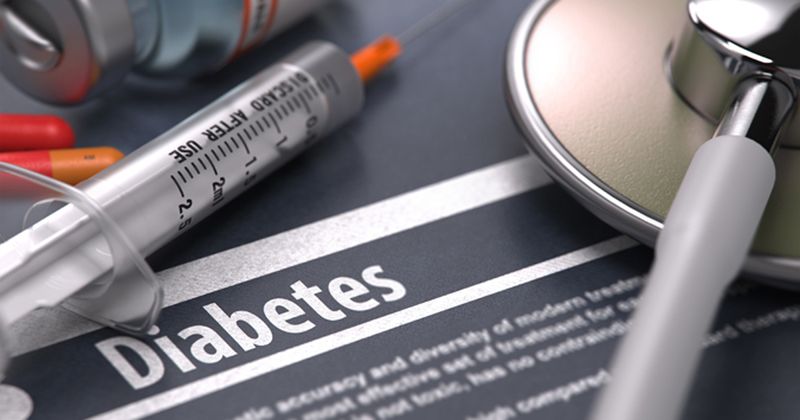Survivors of childhood cancer have increased risk for prediabetes
Survivors of childhood cancer are more likely to have prediabetes at younger ages than the general public, increasing their already elevated risk for diabetes and cardiovascular and kidney diseases, study findings showed.
Results published in Journal of Clinical Oncology reveal that nearly 30% of survivors developed prediabetes compared with less than 20% of patients in a matched control group. Further analysis showed that between the ages of 40 and 49 years, more than 60% of the survivor group had either prediabetes or diabetes.


“If you're seeing survivors, you should be screening and then counseling them that this is a medical condition that we can potentially treat — and giving them specific recommendations for lifestyle change if they have typical risk factors like overweight and obesity,” Stephanie B. Dixon, MD, MPH, an assistant member in the division of cancer survivorship at St. Jude Children’s Research Hospital, told Healio.
More than 85% of individuals with childhood cancer survive at least 5 years, but more than 80% of that population develops a chronic condition by the time they are 45 years old, according to background information provided by researchers.
Survivors are roughly twice as likely to develop diabetes compared with the public, which increases the odds of having other health issues.
Assessing the risk
Dixon and colleagues sought to determine the prevalence of prediabetes in survivors because it is a modifiable risk factor in the general public and identifying it early in cancer survivors could potentially lower the risk for future conditions.
“It’s not something that a lot of the cohorts of childhood cancer survivors would’ve been able to assess because a lot of them rely on self-report,” Dixon said. “But in our St. Jude Lifetime Cohort (SJLIFE), we have laboratory assessments on all of our survivors.”
Researchers used SJLIFE to build a study cohort of 3,529 survivors and 448 control patients, all of whom received treatment at St. Jude from 1962 through June 30, 2012.
Survivors had higher rates of prediabetes (29.2% vs. 18.1%) and diabetes (6.5% vs. 4.7%) compared with the control group. Over a median follow-up period of 5.1 years, 10% of survivors who had prediabetes progressed to diabetes.
Between ages 40 to 49 years, 45.5% of survivors had prediabetes and 14% had diabetes.
Survivors who received abdominal radiation — particularly the pancreatic tail — had an elevated risk among other treatment subsets.
Dixon expected abdominal radiation to play a factor, but the broad swath of survivors who had prediabetes — including those with healthy weights and body mass indexes — highlighted the need for oncologists to understand a slight elevation in blood sugar level is important to monitor.
‘Give them something actionable’
Young cancer survivors, like young adults in the public, do not always regularly see doctors in their 20s and might not grasp the severity of the risk, especially if they do not have common risk factors like family history, overweight or obesity.
“A lot of times when you go to see your doctor there’s understandably not a lot of time in a visit to review a complex document, and you might have concerns that are more important to you at that visit than your potential risk for prediabetes,” Dixon said. “Informing survivors so that they can advocate for themselves, and survivors’ parents, is a good start.”
More frequent screenings and communication with primary care physicians is critical, she added.
“When there's so many things going on, during a one-time lab assessment you might mention off hand, ‘Your sugar was a little high today,’ but I think it’s hard for a patient to then know this is a problem or that they can do anything about it,” Dixon said. “It’s important to use the term ‘prediabetes,’ and that it can progress to diabetes. Give them something actionable.”
She also discussed dietary changes and 150 minutes of cardiovascular exercise per week — as the CDC recommends for everyone — because a 5% to 7% reduction in weight reduces progression risk in the general population.
“It might not be super fancy or different recommendations than you’re giving the general population — it just might be more important in survivors,” Dixon said.
Alternate treatments may be necessary as well, but more research must be conducted, Dixon said.
“How do we prevent it from progressing to diabetes? What treatments do we use, and are those treatments different depending on the diagnosis of the survivor, or whether or not they receive certain cancer-directed therapies like radiation to the abdomen? Do those survivors with prediabetes need different management than others?” Dixon contemplated.
The answers could come from a clinical trial or by “understanding how patients have been treated for prediabetes or diabetes after a cancer diagnosis,” she added.
Another key question for survivorship researchers becomes how to help patients manage their diabetes risk as cancer therapies evolve, according to Dixon.
“When we did abdominal radiation in the past, a lot of times it was whole abdomen and everything was hit, and now a lot of times we’re using more targeted fields or proton therapy. How does risk change related to that?,” she said. “What about some of these new novel therapies? I’m thinking about immunomodulating therapies and checkpoint blockade that can have off-target effects — many of them being autoimmune or inflammatory — and will that end up being a risk factor for future conditions, whether that’s hypothyroidism or diabetes or other endocrine-type problems.”
For more information:
Stephanie Dixon, MD, MPH, can be reached at stephanie.dixon@stjude.org.

